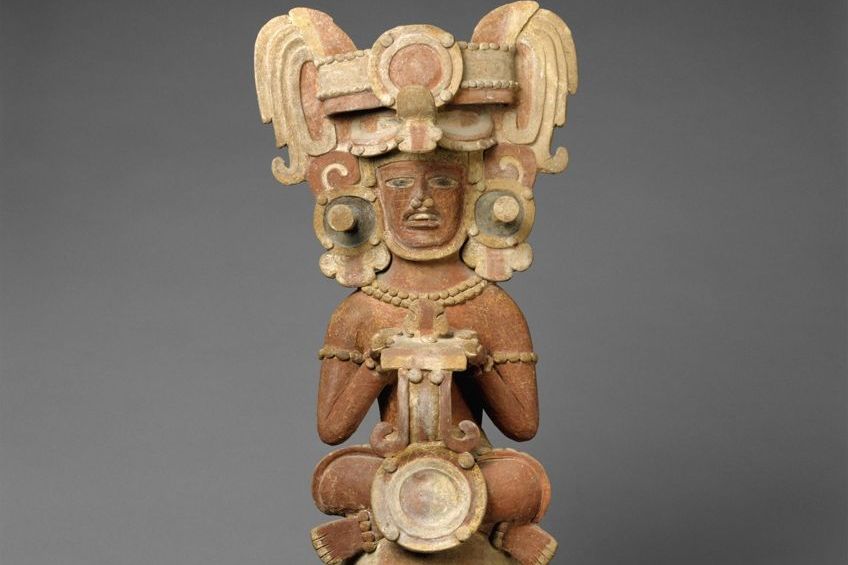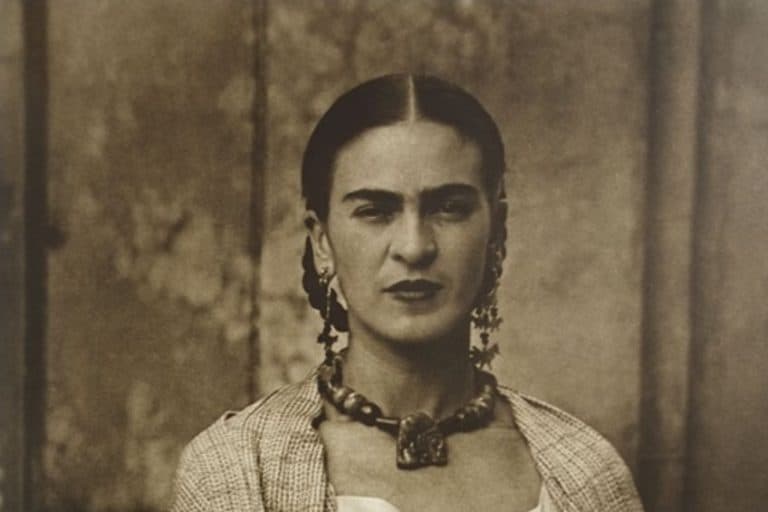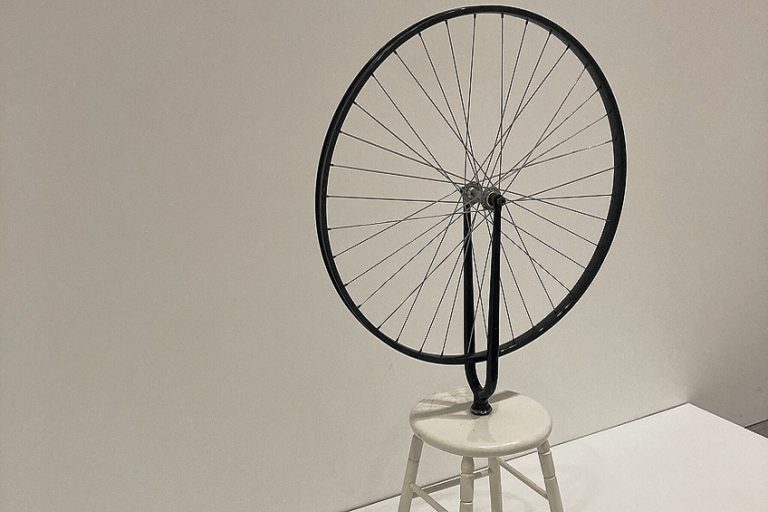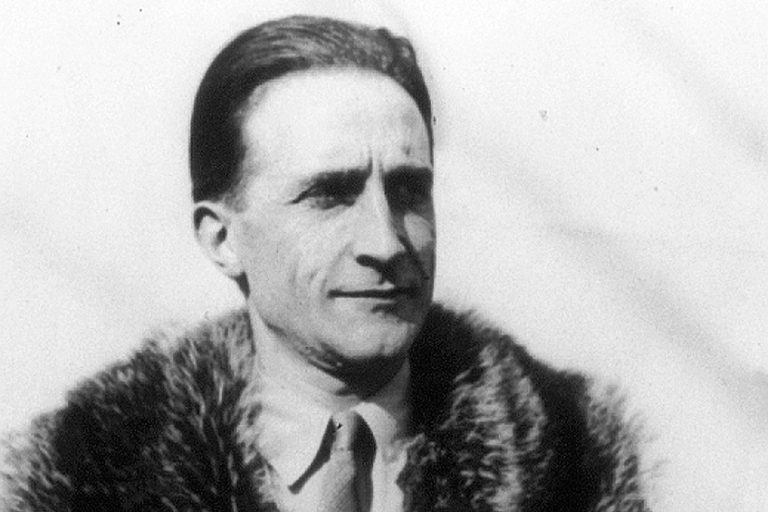Mayan Artifacts – Exploring Some Influential Mayan Relics
Due to their depictions in modern media, the ancient Mayan people have loads of positive and a few negative stereotypes attached to the perception of their culture. Even before the arrival of European and English settlers in the Americas, the Mayan people were a sociologically and scientifically advanced society. They had advancements in mathematics and the written word that rivaled even the most progressive cultures at the time, and this means they left behind some pretty cool and historically significant artifacts. This being said, let’s have a look at exactly who the Maya people were as well as what Mayan artifacts have been found in recent years.
Who Were the Mayan People?
Before we get into some Mayan artifacts, we think it’s a good idea to get to know the ancient Mayan people first. In terms of historical and cultural significance, the ancient Mayan people are known today for their ancient glyphs, mathematics, art, calendars, and their ability to track both the stars, our sun, and the planets.
The Mayan people had their civilization developed in the Maya region of what is now South America. They had many settlements that spanned many regions, from Mexico, to Belize, to Guatemala, to El Salvador, and even all the way to the Yucatan Peninsula! This was a truly huge cultural territory, each one with its own languages, dialects, and subcultures.

Unlike many other ancient civilizations, the descendants of ancient Mayan tribes still live in the same areas that their ancestors did. There are around six million people living in these regions who speak a number of different languages and have loads of different religious and cultural practices, some of them directly related to the indigenous people of these regions.
Around 2000 BCE, the Mayan people developed their first complex societal structures that would lead to a time of prosperity for the people at large. Around this time the society and region at large would begin to cultivate the land in an effort to grow crops, which became their primary means of both subsistence and trade with each other and outsiders.
Their primary agricultural output would be maize and beans, which is still a big part of the modern diet of the people of this region.
Both chili peppers and squashes were grown alongside the maize and beans, which led to the creation of some really tasty recipes along the way. The Mayan people were also known for their monumental architectural achievements.
A combination of advancements in both architecture and engineering saw city-states grow and eventually develop trade routes and discourse with one another. Unfortunately, this period of prosperity did not last forever, as some city-states grew more and more powerful, eventually resulting in the civil war in a mad grab for power.
This series of civil wars resulted in a lack of cohesion within Mayan communities, and unfortunately for them, this period coincided with the arrival of Spanish colonialists who sought to expand their empire. In the end, despite a considerable effort on the part of the Mayan natives, their last city fell around the year 1697, ending the reign of the ancient Mayans.
Ancient Mayan Artifacts
During their existence and before they were colonized, the Mayan people produced quite a bit of infrastructure and artwork out of various materials using many disciplines. After the collapse of their civilization, this left a lot of ancient Mayan artifacts for archaeologists and historians alike to discover. This being said, let’s have a look at some ancient Mayan artifacts that have made the headlines over the years. The following are part of an extensive exhibit at the Metropolitan Museum of Art in New York City.
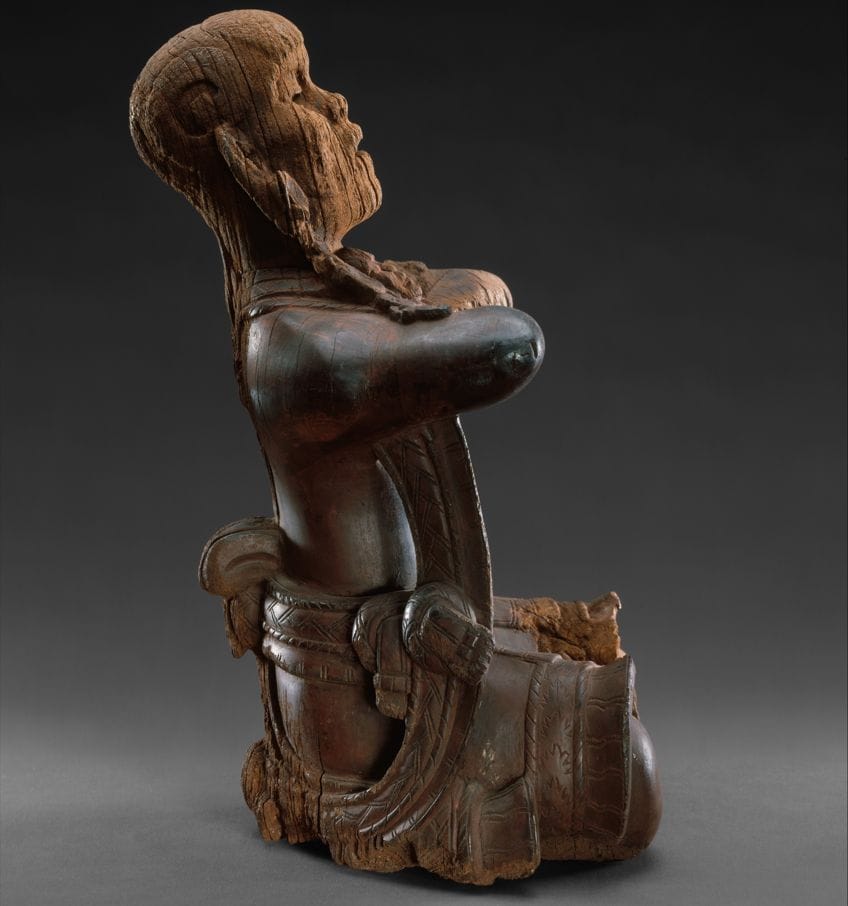
Mayan Scepter with Profiles (7th – 8th Century)
| Artist | Ancient Mayan peoples |
| Date Created | 7th – 8th century |
| Mediums | Flint |
| Dimensions (cm) | 34.6 x 19.1 x 1.6 |
| Location of Discovery | Mexico or Guatemala, Mesoamerica |
| Current Location | The Metropolitan Museum of Art, New York City, United States |
The ancient Mayans were no strangers to using exotic materials in the creation of their cultural artworks. In this Mayan relic example, flint has been used to create the head of a scepter for what is believed to have been a person of power. The blade represents two figures, evoking the image of a king/leader being carried by his followers.
The ancient Mayans believed that flint was created when lightning struck the earth, an understandable association considering how flint is used to create fire.
Both figures are believed to present the Mayan lightning god K’awiil, which makes sense considering the material selected and the overall style of the piece. This blade would have been placed on top of staff as an indication of leadership.
Mayan Spouted Jar (1st Century BCE)
| Artist | Ancient Mayan peoples |
| Date Created | 1st century BCE |
| Mediums | Compacted limestone |
| Dimensions (cm) | 13.7 × 15.9 × 13.7 |
| Location of Discovery | Guatemala or Mexico, Mesoamerica |
| Current Location | The Metropolitan Museum of Art, New York City, United States |
One of the little-known facts about the Mayan people is that they took their chocolate quite seriously. In fact, there were entire industries built around the production and distribution of chocolate, which many believed to be a sacred gift from the Gods. This example of Mayan pottery was used to store and froth a chocolate drink that was popular at the time.
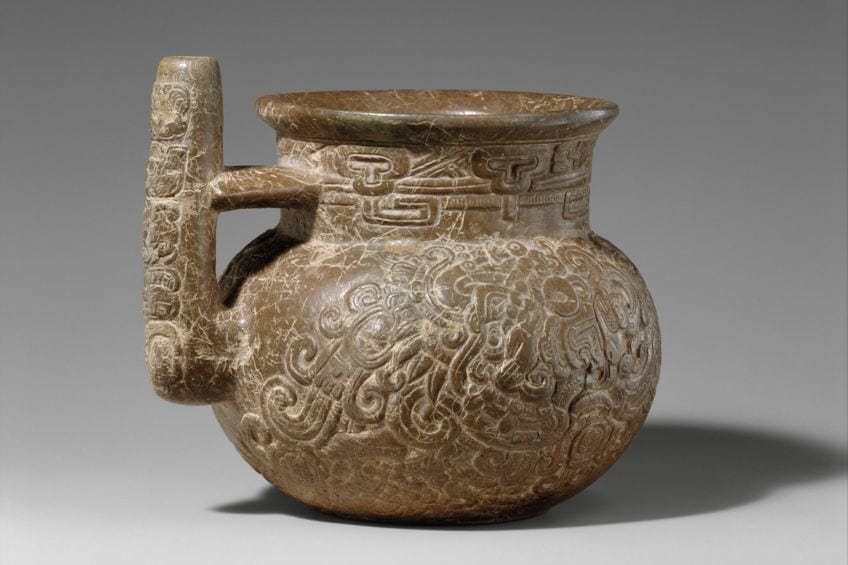
The example of Mayan pottery is made of compacted limestone, likely to ensure that it could be heated, cooled down, and shaped without compromising its integrity. The spout was used to breathe air into the chocolate mixture to make it frothy on the surface, not unlike hot steam is used to make cappuccino milk these days. It is also adorned with images of deities and birds, indicating the importance of the vessels.
Pair of Maize God Carvings (5th – 7th Century BCE)
| Artist | Ancient Mayan peoples |
| Date Created | (5th – 7th century BCE) |
| Mediums | Shell |
| Dimensions (cm) | 5.7 × 4.8 × 0.3 |
| Location of Discovery | Honduras or Belize, Mesoamerica |
| Current Location | The Metropolitan Museum of Art, New York City, United States |
As is widely known the Mayans had an assortment of gods that they attributed to different aspects of their daily lives. This set of ear flares is a depiction of the head of their maize god, believed to be responsible for a bountiful harvest and the preservation of crops. The piece is intricately carved and surprisingly well preserved for the material it’s made out of.
Shell was a fairly sought-after material in the ancient Mayan world, which is an indicator of their previous owner’s wealth and status in society at the time.
It is clear that each head was designed by a different artist, or at the very least at different points in time by looking at the carvings. This piece is quite rare as organic materials tend to degrade quickly when exposed to the type of humidity found in the ancient Mayan region.
The Trumpeter Figurine (10th – 16th century BCE)
| Artist | Ancient Mayan peoples |
| Date Created | 10th – 16th century BCE |
| Mediums | Clay |
| Dimensions | Unavailable |
| Location of Discovery | Archaeological site, Rita Corozal, Belize |
| Current Location | The Metropolitan Museum of Art, New York City, United States |
This figure depicts a trumpeter, or “conch blower” if we’re being really specific. It is believed to be a symbol of celebration in Mayan culture, which makes sense considering that as human beings we love a bit of a show and music on special occasions. These aren’t particularly unique, and the symbolism is actually pretty common in ancient Mayan culture.

This particular example was uncovered in Belize near the town of Corozal, which is now an official archaeological site. It was one of a handful of artifacts uncovered at a cache that is believed to have been buried during a New Year’s Eve celebration. This was a common practice in Mayan culture and led to many archaeological finds.
Carved Ornate Bowl (6th Century BCE)
| Artist | Ancient Mayan peoples |
| Date Created | (6th century BCE) |
| Mediums | Ceramic |
| Dimensions (cm) | 9 ¼ (d) |
| Location of Discovery | Mexico, Mesoamerica |
| Current Location | The Metropolitan Museum of Art, New York City, United States |
While most Mayan artifacts are thought of to be representations of their Gods, some are simply practical objects that have been stylized to make things a bit less bland. This ceramic bowl has moving serpents etched into its circumference. The serpent figures appear the be feathered, and have little beards at the base of their jaws to boot!
This winding (or up and down as represented visually) is thought to indicate the serpent entering and exiting the underworld.
The entire bowl is a glossy black in color, and could easily be mistaken for a modern one, although what this bowl was used for remains unknown. The inner of the bowl actually has the Mayan representation of a date inscribed on it, believed to be 539 CE.
Mayan Deity Figure (3rd – 6th century)
| Artist | Ancient Mayan peoples |
| Date Created | (3rd – 6th century) |
| Mediums | Jade stone |
| Dimensions (cm) | 10.8 x 6.4 x 2.3 |
| Location of Discovery | Southern Mexico, Guatemala, Belize |
| Current Location | The Metropolitan Museum of Art, New York City, United States |
This jade figure is one of many that have been discovered all over the ancient Mayan cityscape. There are many variations of this type of figure, but the throughline with all of them is that they represent some form of deity. This one in particular is believed to represent the Principal Bird Deity, a guardian of the sky and many other aspects of Mayan existence.

The figure has a human body but the head of a bird, or it could be alternatively interpreted as a human wearing a bird-shaped mask. The figure sits in a crab-claw position (a term coined by Mayan Scholars). This position I considered to be a diagnostic feature of statues from this time period and many similar statues can be found “seated” in this position.
Statue of King Jaguar Bird Tapir (Early 7th Century BCE)
| Artist | Ancient Mayan peoples |
| Date Created | Early 7th century BCE |
| Mediums | Sandstone |
| Dimensions (cm) | 258 × 73 × 51 |
| Location of Discovery | Tonina, Chiapas, Mexico |
| Current Location | The Metropolitan Museum of Art, New York City, United States |
While the ancient Mayan people revered their gods, they also had a lot of respect for their rulers. This particular statue was designed by Royal sculptors to commemorate the ascension of King Jaguar Bird.
The representation of the king wears an extremely tall and rather elaborate headdress, featuring representations of insects, snakes, and even a jaguar!
The purpose of this representation of the late king was to show just how close to the gods and other supernatural entities he was thanks to his position of power. This statue is fairly heavy and rather well-preserved for its age, which might be an indication that no expense was spared when it came time to choose a material for this piece.
The Censer, Seated King (4th Century BCE)
| Artist | Ancient Mayan peoples |
| Date Created | (4th century BCE) |
| Mediums | Ceramic |
| Dimensions (cm) | 80 × 31.1 × 22.9 |
| Location of Discovery | Guatemala, Central America |
| Current Location | The Metropolitan Museum of Art, New York City, United States |
This is another artifact from Mayan society that has a practical use as well. This depiction of a seated king with a huge headdress is actually an incense burner that was used to burn resins in the home. There are at least two other examples of this piece, all of which have faded but are believed to have once been very brightly colored.
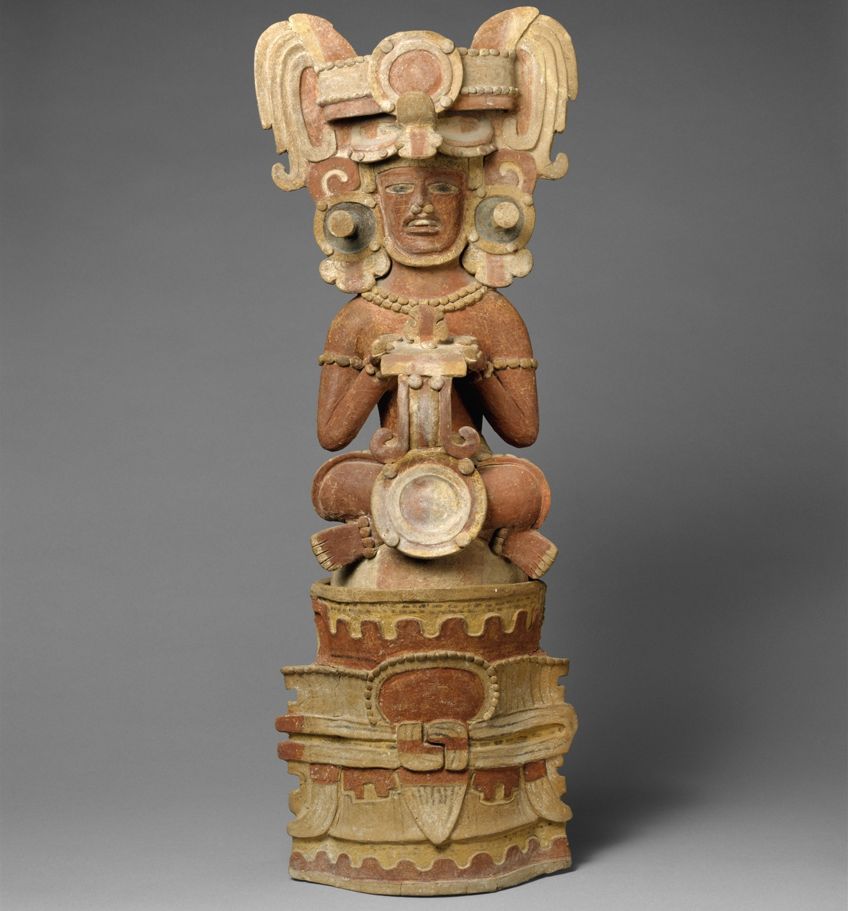
Experts believe that this is a depiction of an ancient Mayan king wearing a headdress to impersonate a deity. The circular object in the king’s hands is believed to represent a mirror, which could aim to evoke reflection in the viewer. The base of the statue has representations of jaguar skins and canine fangs etched into it, indicating the power and strength of the past leader.
Mayan Figure in Costume (7th – 8th Century BCE)
| Artist | Ancient Mayan peoples |
| Date Created | (7th – 8th century BCE) |
| Mediums | Ceramic |
| Dimensions (cm) | 29.3 x 9.7 x 9.5 |
| Location of Discovery | Mexico, Mesoamerica |
| Current Location | The Metropolitan Museum of Art, New York City, United States |
The Mayan people are often portrayed to be a strong-willed and at times combative civilization, but they also made loads of time for both celebration and traditional ceremonies. This Mayan relic figure of a pot-bellied man holding a square shield in his left hand is believed to embody the spirit of just such occasions. The figure is stout, his mouth is open indicating speech, and he wears a loincloth over what appears to be a body suit.
The figure’s chest is covered by a massive emblem of an anthropomorphic animal, and he wears a huge headdress.
The top of this figure’s head also functions as a wind instrument, and figures like these have been found buried with people of all ages from ancient Mayan societies. This figure is believed to be the equivalent of a “Jester” from ancient Europe.
This figure is often called the “fat man” or “fat god” by some figures as little is actually known about what exactly this form represents. The figure was once brightly colored, but as you can see the centuries have not been kind to the “fat god’s color palette. This particular figure is missing his right arm, which is believed to have once held a sword.
Mayan Rain God Head (10th – 11th Century)
| Artist | Ancient Mayan peoples |
| Date Created | (10th – 11th Century) |
| Mediums | Limestone |
| Dimensions (cm) | 34.9 x 30.2 x 23.8 |
| Location of Discovery | Yucatan Peninsula, North America |
| Current Location | The Metropolitan Museum of Art, New York City, United States |
Mayan statues rarely didn’t have a greater spiritual representation. This one represents the Mayan god of rain called Chac and is thought to be what remains of a once complete statue. The eyes of the statue are enlarged, and the brows and orbitals are marked with various dots and indentations. This is because the Mayans believed that their deities saw the world differently from humans.
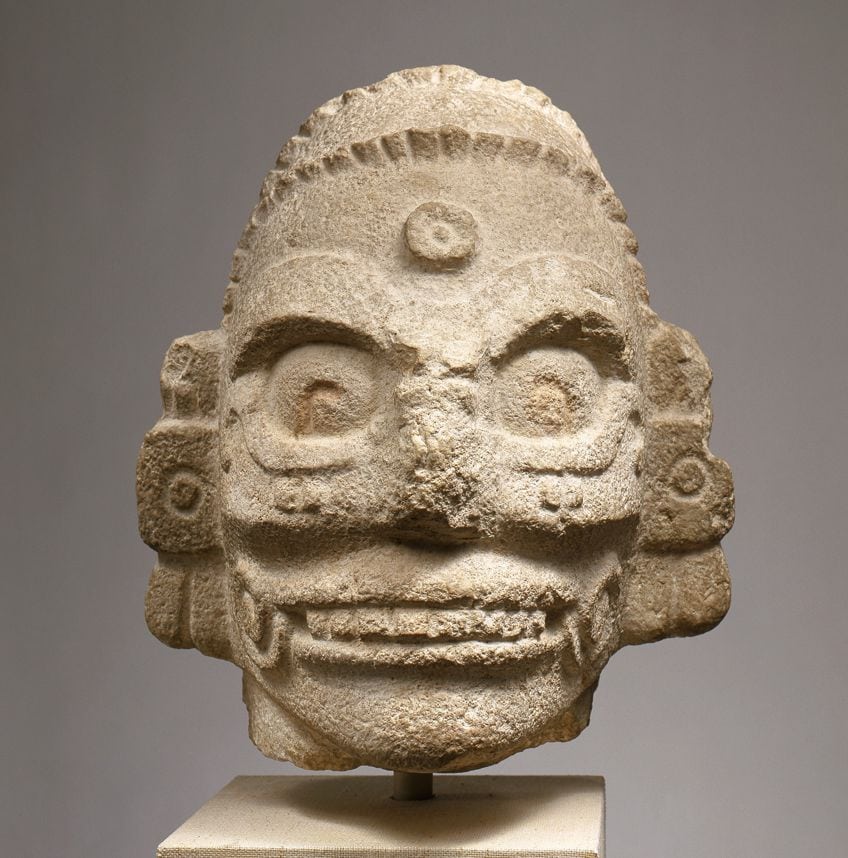
The style of this statue is thought to be either collaborative or heavily influenced by the Mayan’s contact with the Chichen Itza people. The perceived intention behind this and other Mayan statues like these is believed to have been to force the viewer to consider the natural world and the powerful forces that were believed to govern it at the time.
Now that you know who the Mayan people are, what their lives were like, where they lived, what they did, and how their ancient civilization eventually came to end, its time for you to get out there and put your newfound knowledge to the test. The artifacts are a window into the lives and minds of those long past, and should always be treated with care and respect.
Take a look at our Mayan statues webstory here!
Frequently Asked Questions
What Does the Mayan Jaguar Symbol Mean?
The jaguar and representations of it are fairly common in ancient Mayan artifacts. What does the Mayan Jaguar symbol mean though? Well, it is a symbol of power and strength, especially when associated or pictured with leaders (kings) of the time.
Who Is the Mayan Jaguar God?
There are many gods in the Mayan pantheon, but none are quite as revered and feared as the jaguar. Who is the Mayan jaguar god? Well, he is believed to be the god of the underworld and is said to kill anyone who opposes him with a single blow.
Who Are Mayans Today?
The descendants of the ancient Mayan people actually still live in the same places where the great ancient cities once stood. They are around six million people strong and are the largest concentration of indigenous people to the north of Peru.
Isabella studied at the University of Cape Town in South Africa and graduated with a Bachelor of Arts majoring in English Literature & Language and Psychology. Throughout her undergraduate years, she took Art History as an additional subject and absolutely loved it. Building on from her art history knowledge that began in high school, art has always been a particular area of fascination for her. From learning about artworks previously unknown to her, or sharpening her existing understanding of specific works, the ability to continue learning within this interesting sphere excites her greatly.
Her focal points of interest in art history encompass profiling specific artists and art movements, as it is these areas where she is able to really dig deep into the rich narrative of the art world. Additionally, she particularly enjoys exploring the different artistic styles of the 20th century, as well as the important impact that female artists have had on the development of art history.
Learn more about Isabella Meyer and the Art in Context Team.
Cite this Article
Isabella, Meyer, “Mayan Artifacts – Exploring Some Influential Mayan Relics.” Art in Context. January 12, 2023. URL: https://artincontext.org/mayan-artifacts/
Meyer, I. (2023, 12 January). Mayan Artifacts – Exploring Some Influential Mayan Relics. Art in Context. https://artincontext.org/mayan-artifacts/
Meyer, Isabella. “Mayan Artifacts – Exploring Some Influential Mayan Relics.” Art in Context, January 12, 2023. https://artincontext.org/mayan-artifacts/.


